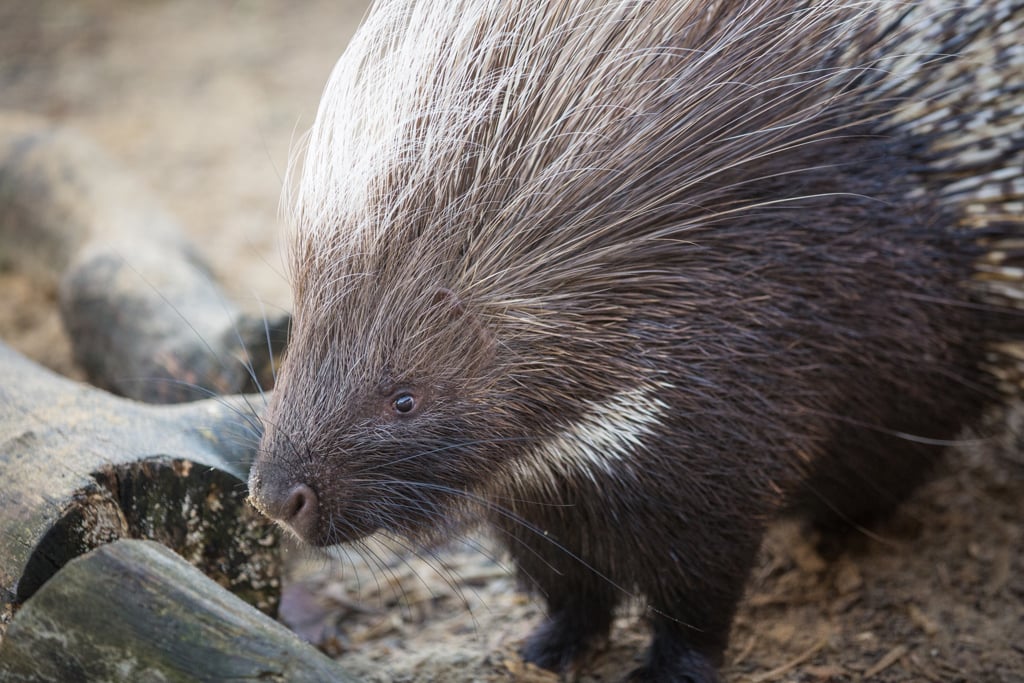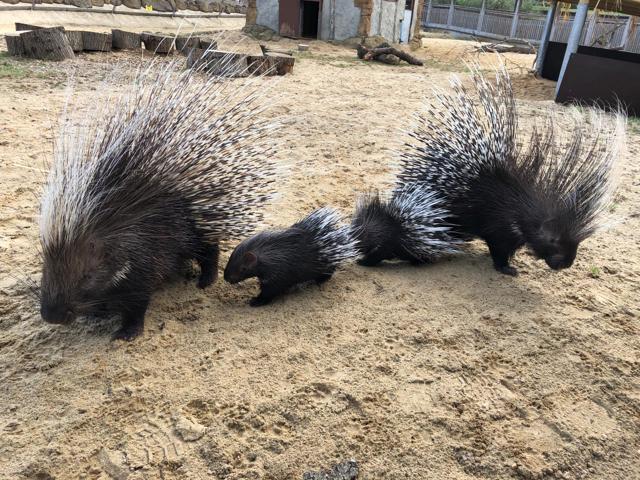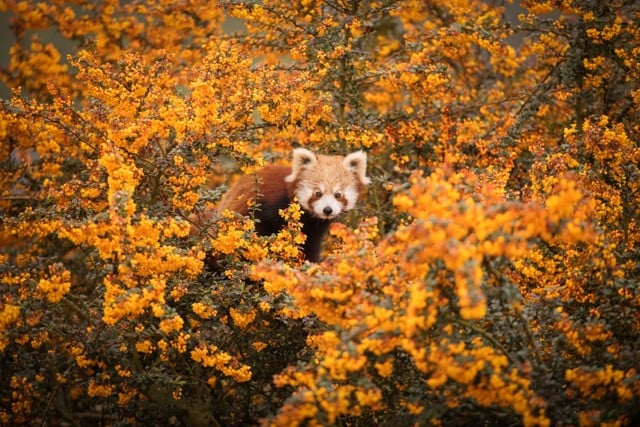Overview
Woburn's 'Desert Springs' enclosure is home to a family of cape porcupines that live alongside the meerkats and yellow mongoose. As a naturally nocturnal species, the family is very shy during the day time, but always wakes up to come and eat their favourite food.

All about us
| Distribution: | Southern and central Africa, to southern Kenya, Uganda, and Congo |
|---|---|
| Habitat: | Dense forests and dry deserts |
| Height: | Length: 63 to 81 cm |
| Weight: | 10kg-30kg |
| Gestation Period: | 94 days |
| Lifespan: | Wild: 10 years. Captivity: up to 20 years |
| Threats: | Habitat destruction, being hunted for food and being persecuted as pests |
About us
Scientific name: Hystrix africaeaustralis
Cape porcupines are the world's largest species of porcupines, and are Africa's largest rodent. They are similar in appearance to the crested porcupine but they are slightly larger. They can be told apart by the presence of a band of short white spines along the midline of their rump.

Cape porcupines mostly eat fruits, roots, bulbs and bark but they have also been known to gnaw on carrion and bones.
Porcupines are social animals, living in small family groups of an adult pair and their offspring. This family group lives in a complex tunnel system, spending the day time in the burrow, and going out to forage for food at night time. Although they are social they will forage for food alone. The burrow may be a hole in a cave, rock crevice, or an unused aardvark hole, but they will also dig their own burrows. The female will move to a separate part of the tunnel system when giving birth to new young, building her own nesting chamber, where she will stay alone.
The porcupine communicates through a series of noises, and body language. If threatened or acting aggressively they will growl, snort, grunt, cough, and produce whining sounds. They will also stomp their feet, make a clicking noise with their teeth, jump up and down, and produce a loud hissing noise using the specially adapted quills on their tail, which make this noise when rattled.
When they are feeling seriously threatened they will run at speed backwards towards the threat, embedding the quills deep into them, often causing serious injury, or death through infection. They have been known to seriously injure and even kill lions, leopards, and even humans.
Cape porcupines mate throughout the year.
After a period of around 94 days the female will give birth. She will give birth to one, two, or three young, known as porcupettes. At birth they will weigh only 3% of their mother’s weight. They start life with their eyes open, developed teeth, and soft quills, which will harden at around a week, coinciding with the first time they leave the den. They will rely on their mother’s milk for the first two or three weeks, after which they will start to eat solid food. Males will be involved in rearing the young, and will forage along side them, and defend them.
Adults will become sexually mature when they reach full body weight, at around one to two years old.
In the wild cape porcupines would eat a range of plant materials, roots, tubers, and crops. We give our porcupines a varied diet, including root vegetables and various vegetables, to mimic the nutritional content of their natural diet. They do also love to chew, which they need to do constantly to wear down their incisor teeth, which grown constantly throughout their life. We give them branches from various trees to chew on, and large logs to gnaw on to help maintain their teeth. They would also chew on bone to keep their teeth sharp, and to get a supply of calcium, and so we give them bones occasionally to allow this behaviour.
Porcupines are naturally nocturnal, but as our porcupines have been bred in captivity, they are used to being active during the day. They can be quite shy during the day time, but will always come out to feed on their favourite foods, and we make sure that they are fed at intervals during the day so that they have the option to feed whenever they like.
They are often considered as pests by farmers as they will happily feed on crops and damage trees, however their debarking of trees is vital in the maintenance of local savannah ecostems.
They have special quills at their tail which make a loud hissing noise when rattled!
Porcupines will travel up to 15km in a night to look for food!
Porcupines collect large quantities of bones and hard objects to chew to wear down their teeth, sometimes thousands of bones have been found in one burrow!

